Your cart is currently empty!
Month: July 2024
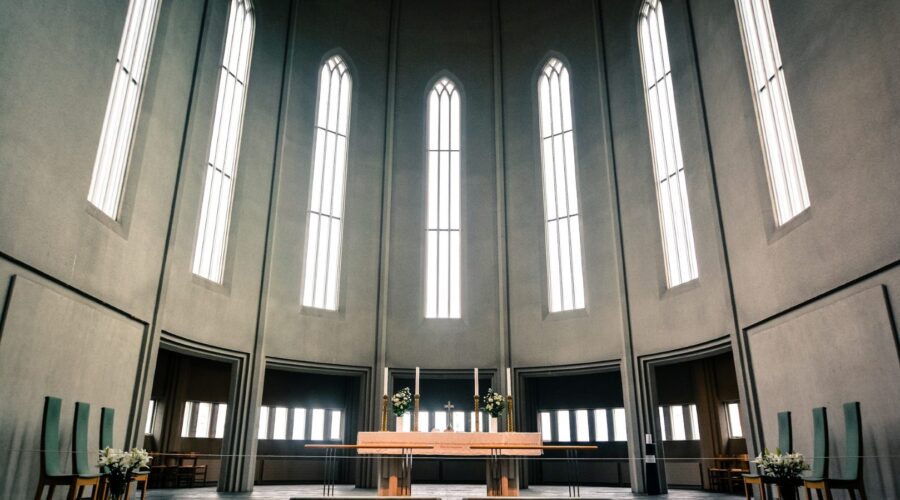
Discover the History and Significance of the Immaculate Heart of Mary Church
“`html
The Immaculate Heart of Mary Church, a radiant beacon of faith, stands as a testament to the unwavering devotion of countless believers. This sacred space, enshrined in the heart of many communities, holds a rich history and profound significance that has touched the lives of generations.
Historical Roots
The origins of the Immaculate Heart of Mary Church can be traced back to the early days of Christianity. The veneration of Mary, the mother of Jesus Christ, has been a cornerstone of the Catholic faith since its inception. The concept of the Immaculate Heart, representing Mary’s purity and sinlessness, gained prominence in the Middle Ages.
Throughout history, numerous churches and cathedrals were dedicated to the Immaculate Heart of Mary. These structures served as centers of worship and pilgrimage, attracting the faithful from far and wide. The construction of the Immaculate Heart of Mary Church in various locations exemplified the deep devotion and unwavering faith of Catholics around the world.
Architectural Marvels
The Immaculate Heart of Mary churches are renowned for their architectural splendor and artistic beauty. Each church exhibits unique characteristics that reflect the prevailing architectural styles of its time.
Neo-Gothic Masterpieces
- The Immaculate Heart of Mary Church in Albany, New York, showcases the intricate details and soaring spires of the Neo-Gothic style.
- The Immaculate Heart of Mary Church in San Francisco, California, boasts an awe-inspiring façade adorned with elaborate carvings and stained-glass windows.
Romanesque Revival Architecture
- The Immaculate Heart of Mary Church in Pittsburgh, Pennsylvania, features the distinctive arches and rounded windows of Romanesque Revival style.
- The Immaculate Heart of Mary Church in Indianapolis, Indiana, exhibits a harmonious blend of Romanesque and Beaux-Arts elements.
Devotional Practices
The Immaculate Heart of Mary Church serves as a sanctuary for prayer, reflection, and spiritual growth. Devotees gather within its hallowed halls to engage in various devotional practices.
Rosary Devotions
The recitation of the rosary, a traditional Catholic prayer, holds a special place in the Immaculate Heart of Mary Church. Rosary groups meet regularly to pray for the intercession of the Blessed Mother.
Novena Devotions
Novenas, nine-day periods of prayer, are frequently held in honor of the Immaculate Heart of Mary. These devotions focus on specific intentions or petitions.
Consecration to Mary
Many individuals choose to consecrate themselves to the Immaculate Heart of Mary, a spiritual practice that involves entrusting one’s life to her care and protection.
Community Outreach
The Immaculate Heart of Mary churches extend their mission beyond their physical walls, actively engaging in community outreach programs.
- Soup kitchens and food pantries provide sustenance to those in need.
- Clothing drives and thrift stores support the underprivileged.
- Educational programs offer enrichment opportunities for children and adults.
- Counseling and support services provide guidance and assistance to individuals facing challenges.
Conclusion
The Immaculate Heart of Mary Church is more than just a building; it is a vibrant and enduring symbol of faith and devotion. Its rich history, architectural splendor, and ongoing outreach efforts have left an indelible mark on countless lives. As a beacon of hope and a source of spiritual nourishment, the Immaculate Heart of Mary Church continues to inspire and uplift believers throughout the world.
“`
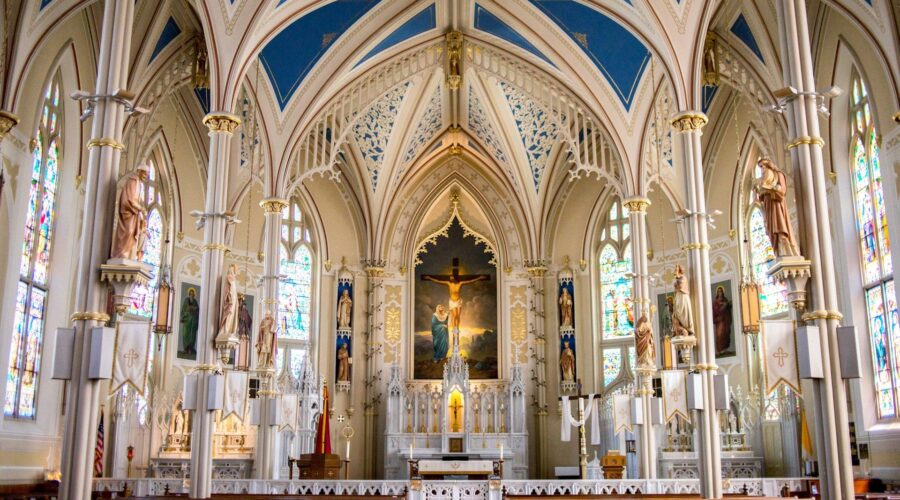
Discover the Immaculate Conception Parish: A Spiritual Haven in the Heart of Your Community
Introduction
In the vibrant tapestry of faith communities, the Immaculate Conception Parish stands as a radiant beacon of spiritual guidance and unwavering support. Nestled in the heart of your neighborhood, this sacred sanctuary welcomes all with open arms, offering a sanctuary of solace, inspiration, and unwavering connection to the divine.
Established in the year [insert year], the Immaculate Conception Parish has been a cornerstone of the community for generations. Its rich history is interwoven with the lives of countless individuals who have found spiritual sustenance within its hallowed halls. Guided by the tenets of Catholic faith, the parish serves as a vibrant and inclusive hub where all are welcome to deepen their relationship with God.
Services and Programs
The Immaculate Conception Parish offers a comprehensive range of services and programs designed to cater to the diverse needs of its congregation. These include:
Sunday Mass Schedule
- Saturday: 5:00 PM (Vigil Mass)
- Sunday: 8:00 AM, 10:00 AM, and 12:00 PM
Weekday Masses
- Monday, Wednesday, and Friday: 8:00 AM
- Tuesday and Thursday: 7:00 PM
Sacraments
- Baptism
- Confession
- Eucharist
- Confirmation
- Marriage
- Anointing of the Sick
Education and Formation
- Religious Education Classes for Children
- Adult Faith Formation Programs
- Bible Study Groups
- Retreats and Workshops
Community Outreach
- Food Pantry
- Clothing Drive
- Soup Kitchen
- Visitation Programs
- Social Justice Initiatives
Parish Staff and Leadership
The Immaculate Conception Parish is led by a dedicated team of clergy, staff, and volunteers who are committed to providing a welcoming and supportive environment for all.
Pastoral Team
The pastoral team consists of:
- Pastor
- Associate Pastor
- Deacon
Parish Staff
The parish staff includes:
- Parish Administrator
- Director of Religious Education
- Music Director
- Office Staff
Parish Council
The parish council is a group of elected representatives who work in collaboration with the clergy to provide guidance and support in the decision-making process.
How to Get Involved
There are many ways to get involved in the Immaculate Conception Parish. You can:
- Attend Mass regularly
- Join a ministry or program
- Volunteer your time
- Donate to the parish
- Share your faith with others
For more information about the Immaculate Conception Parish, please visit our website at [insert website address].
Conclusion
The Immaculate Conception Parish is more than just a building; it is a vibrant community of faith where individuals from all walks of life come together to deepen their relationship with God, serve their neighbors, and make a positive impact on the world. Whether you are a lifelong Catholic or someone who is just beginning to explore your spiritual journey, we welcome you to join us and experience the transformative power of community, faith, and service.
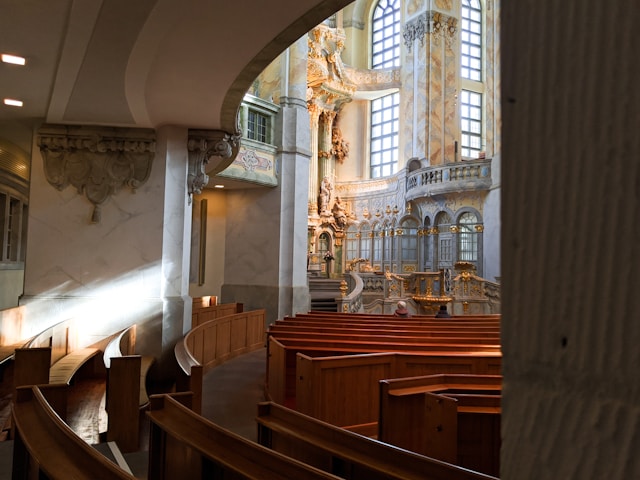
Unveiling the Pristine Splendor of the Immaculate Conception Cathedral
A Journey into History and Architectural Marvel
The Immaculate Conception Cathedral stands as an iconic landmark, a testament to the enduring power of faith and the brilliance of human artistry. Located in the heart of the bustling city, it invites visitors to embark on a journey of beauty, spirituality, and historical significance.
The Founding and Construction
The Visionaries and their Dream
The desire for a cathedral that would embody the grandeur of the Catholic faith in Texas first emerged in the mid-19th century. Bishop John Odin, the first Bishop of Galveston, envisioned a majestic structure that would serve as the seat of the diocese and a symbol of the growing Catholic community.
Building a Monument to Faith
In 1847, Bishop Odin acquired a plot of land on which the cathedral would be built. Construction began in 1853, but faced numerous challenges, including financial constraints and the outbreak of the Civil War. However, through unwavering determination and the generous support of the faithful, the cathedral gradually took shape.
Architectural Splendor
A Journey into the Past
The Immaculate Conception Cathedral is an exquisite example of the Gothic Revival architectural style, which flourished in the 19th century. Its pointed arches, ribbed vaults, and intricate stained glass windows evoke a sense of awe and inspire contemplation.
Strength and Soaring Heights
The cathedral’s exterior is adorned with twin spires that reach towards the heavens, symbolizing the aspirations of the Catholic community. The ornate facade features intricate carvings that depict scenes from the life of Christ and the saints.
A Symphony of Art and Devotion
The interior of the cathedral is equally breathtaking, with its soaring ceilings, graceful columns, and resplendent stained glass windows. The altar, a masterpiece of craftsmanship, is the focal point of the sanctuary. It is surrounded by life-sized statues of the Apostles, each with its unique character and expression.
Spiritual Significance
A Living Legacy of Worship
The Immaculate Conception Cathedral is not merely an architectural marvel but a vibrant center of faith. For over 150 years, it has been the spiritual home to generations of Catholics, providing a sanctuary for prayer, sacraments, and communal celebrations.
A Beacon of Hope
The cathedral has become a destination for pilgrims and visitors from around the globe. It is a place where people come to seek solace, offer prayers of thanksgiving, and witness the beauty of the Catholic faith in all its splendor.
Community and Outreach
A Force for Good
The Immaculate Conception Cathedral extends its mission beyond its physical walls, embracing a spirit of charity and community service. It actively supports numerous outreach programs, providing assistance to those in need and fostering a sense of unity and compassion.
Conclusion
The Immaculate Conception Cathedral is a masterpiece of human ingenuity and a testament to the enduring power of faith. Its architectural grandeur, spiritual significance, and community outreach make it a cherished landmark that will continue to inspire and uplift generations to come.
Additional Resources
- Official Website of the Immaculate Conception Cathedral
- History of the Diocese of Galveston-Houston
- Gothic Revival Architecture in Texas
Key Dates in the Cathedral’s History Year Event 1847 Acquisition of land for the cathedral 1853 Beginning of construction 1878 Completion of the cathedral 1993 Designated as a Texas Historical Landmark 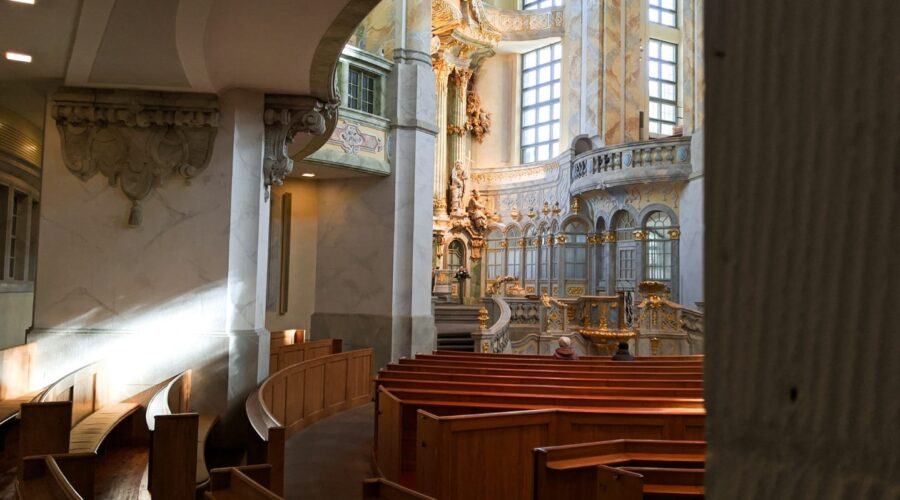
Meet Ignatius of Antioch, the Pioneer of Christian Unity
Who Was Ignatius?
Ignatius of Antioch was a prominent Christian bishop and a disciple of the apostles Peter and John. He is known for his passionate defense of the unity of the Church and his profound theological insights.
Early Life and Conversion
Ignatius was born in Antioch, Syria, around the year 35 AD. He converted to Christianity as a young man and quickly became a dedicated follower of Jesus. He studied under the apostles Peter and John, who had witnessed the life and ministry of Jesus firsthand.
Bishopric in Antioch
Ignatius was appointed the bishop of Antioch around the year 68 AD. As bishop, he faced challenges such as persecution and division within the Church. However, he remained steadfast in his leadership, emphasizing the importance of unity and love.
Writings and Legacy
Ignatius wrote seven letters to various churches on his way to his martyrdom in Rome. These letters are known as the Ignatian Epistles and are an invaluable source of early Christian theology.
Key Themes in Ignatius’ Writings
- Unity of the Church: Ignatius strongly advocated for the unity of the body of Christ, urging believers to submit to their bishops and live in harmony with one another.
- Importance of Hierarchy: He emphasized the importance of the hierarchical structure within the Church, with bishops as overseers of the community and deacons as assistants.
- Significance of Eucharist: Ignatius saw the Eucharist as a symbol of unity and a way to experience the presence of Christ.
- Martyrdom: He embraced martyrdom as a way to follow in the steps of Jesus and to demonstrate the triumph of faith over adversity.
Martyrdom and Significance
In the year 107 AD, Ignatius was arrested by the Roman authorities and sentenced to be taken to Rome to be fed to lions in the arena. During his journey to Rome, he wrote letters to various churches, encouraging them to remain strong and united.
Ignatius’ martyrdom in Rome had a profound impact on the Christian community. He became a model of courage and steadfastness, inspiring future generations of believers. His writings continue to be studied and valued as a source of wisdom and guidance in Christian thought and practice.
Influence on Christian Tradition
- Doctrine of Apostolic Succession: Ignatius’ writings helped establish the doctrine of apostolic succession, which states that bishops receive their authority directly from the apostles.
- Development of Church Structure: His emphasis on hierarchy influenced the development of the organizational structure of the Catholic Church.
- Inspiration for Later Christians: Ignatius’ writings have been a source of inspiration and encouragement for Christians throughout history, who have found strength in his teachings on unity and perseverance.
Conclusion
Ignatius of Antioch was a pivotal figure in the early history of Christianity. His unwavering commitment to the unity of the Church, his profound theological insights, and his courageous martyrdom left an enduring legacy on the Christian tradition. His writings continue to provide guidance and inspiration for believers today, reminding them of the importance of unity, faith, and perseverance in the face of adversity.
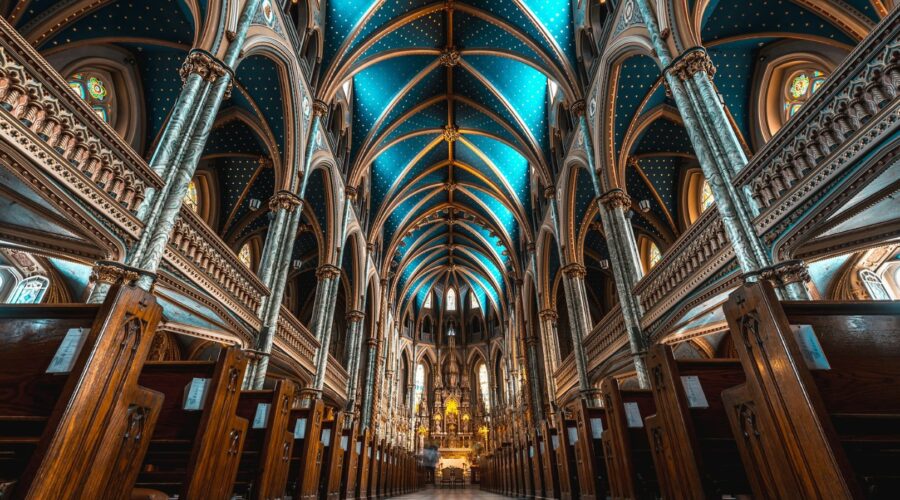
Unveiling the Essence: IF Gathering 2022 — A Comprehensive Guide
Introduction
The IF Gathering 2022, an extraordinary event for women, seeks to ignite hearts and empower souls through faith, connection, and purpose. This blog aims to delve into the heart of the gathering, providing comprehensive details, insights, and practical tips to ensure a transformative experience for all attendees.
Key Dates and Location
Mark your calendars! The IF Gathering 2022 will take place from June 9th to 11th at the Toyota Center in Houston, Texas. This vibrant city will serve as the backdrop for an unforgettable weekend.
Speakers and Worship
The gathering will feature a lineup of renowned speakers who will share their wisdom, insights, and personal stories. Attendees will be inspired by keynote addresses and engaging breakout sessions that delve into topics such as faith, relationships, purpose, and personal growth. Additionally, powerful worship led by talented musicians will create an atmosphere of connection and spiritual renewal.
Confirmed Speakers:
- Christine Caine
- Jennie Allen
- Priscilla Shirer
- Ann Voskamp
- Lysa TerKeurst
Workshops and Activities
Beyond the main sessions, the IF Gathering offers a variety of workshops and activities designed to enhance the experience and provide practical tools for personal growth. Attendees can participate in interactive workshops, connect with other women through small group discussions, and engage in creative activities that foster community and inspiration.
Networking and Community
The IF Gathering is not just about individual transformation; it is also about building a network of like-minded women. Attendees will have ample opportunities to connect, share experiences, and forge meaningful relationships with women from all walks of life. The gathering provides a safe and welcoming space for women to support, encourage, and empower each other.
Practical Tips for Attendees
To make the most of your IF Gathering experience, consider these helpful tips:
- Purchase tickets early: Secure your spot by registering online in advance.
- Book accommodation: Explore hotel options near the Toyota Center to ensure convenient access.
- Plan your schedule: Review the session lineup and choose the workshops and activities that align with your interests.
- Pack comfortably: The gathering involves a lot of walking and standing, so prioritize comfort in your footwear and clothing.
- Bring essentials: Stay hydrated by carrying a water bottle, and consider bringing a journal or notebook for note-taking.
Frequently Asked Questions (FAQs):
- Q: Is the IF Gathering open to all women?
A: Yes, women from all backgrounds, ages, and denominations are welcome to attend.
- Q: What is the cost of attendance?
A: Ticket prices vary depending on the level of access and perks included. Visit the official IF Gathering website for details.
- Q: Are there scholarships or financial assistance available?
A: Yes, the IF Gathering offers scholarships to women with financial need. Visit the website to learn more.
Conclusion
The IF Gathering 2022 promises to be a transformative experience for all who attend. With its inspiring speakers, engaging workshops, and vibrant community, the gathering provides a unique opportunity for women to grow in their faith, connect with others, and discover their purpose. Whether you are a seasoned attendee or a first-timer, prepare yourself for a weekend filled with inspiration, empowerment, and the transformative power of community.
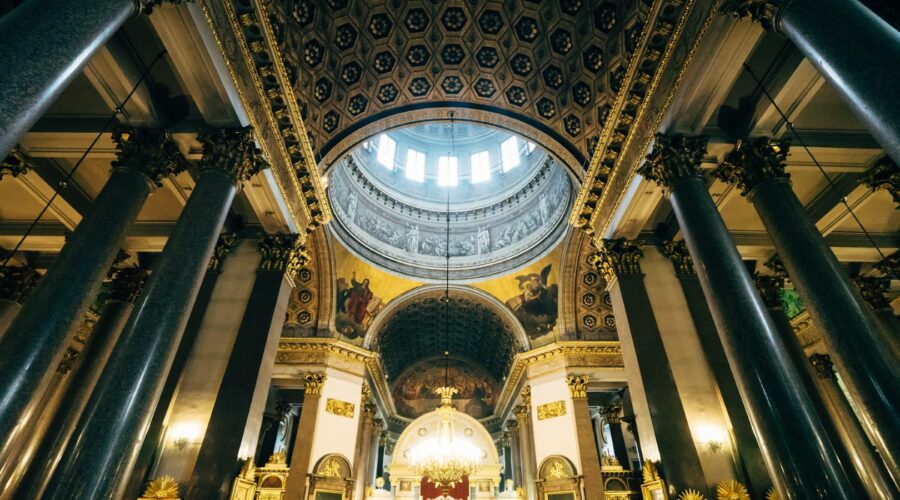
Gather Your Friends and Family for an Unforgettable If Gathering
Are you looking for a way to connect with your loved ones and create lasting memories? An If Gathering is the perfect opportunity to do just that. This unique event brings people together from all walks of life to explore faith, build community, and have fun.
What is an If Gathering?
An If Gathering is a large-scale Christian conference that is held annually in various locations around the world. The event features world-renowned speakers, worship leaders, and breakout sessions that cover a wide range of topics, including faith, relationships, leadership, and social justice.
The If Gathering is more than just a conference; it’s a movement that is passionate about empowering people to live out their faith in every area of their lives. The event is designed to provide attendees with tools and resources to help them grow in their faith, connect with others, and make a difference in their communities.
Who Should Attend an If Gathering?
If Gatherings are open to people of all ages, backgrounds, and beliefs. Whether you’re a seasoned Christian or someone who is just starting to explore your faith, you’re sure to find something of value at an If Gathering.
The event is especially popular with young adults and college students. However, people of all ages can benefit from the messages and experiences that are offered at an If Gathering.
What to Expect at an If Gathering
If Gatherings are typically held over three days. The event includes a variety of activities, including:
- Main sessions: These sessions feature speakers who share their insights on faith, relationships, and leadership.
- Breakout sessions: These sessions are smaller and more focused, covering a wide range of topics.
- Worship services: These services are led by world-renowned worship leaders and provide a time for attendees to come together and worship God.
- Community events: These events provide opportunities for attendees to connect with each other and build relationships.
How to Register for an If Gathering
Registration for If Gatherings typically opens several months in advance. The cost of registration varies depending on the location and type of ticket.
To register for an If Gathering, visit the event’s website.
Tips for Getting the Most Out of an If Gathering
Here are a few tips for getting the most out of an If Gathering:
- Come with an open heart. If Gatherings are a time to learn, grow, and connect with others. Come with an open heart and be ready to receive what God has for you.
- Be prepared to step outside of your comfort zone. If Gatherings are a great opportunity to step outside of your comfort zone and try new things. Don’t be afraid to attend breakout sessions that you’re not familiar with or to connect with people who are different from you.
- Make time for community. One of the best things about If Gatherings is the opportunity to connect with other people. Make time to attend community events and get to know other attendees.
- Bring a journal. An If Gathering is a great time to reflect on your faith and what God is teaching you. Bring a journal to take notes during sessions and to record your thoughts and impressions.
- Be present. It’s easy to get caught up in the excitement of an If Gathering. However, it’s important to be present and to focus on what God is doing in your life. Take time to worship, pray, and listen to what God is saying to you.
An If Gathering is a life-changing event that can help you grow in your faith, connect with others, and make a difference in your community. If you’re looking for a way to experience God in a new way, I encourage you to attend an If Gathering.
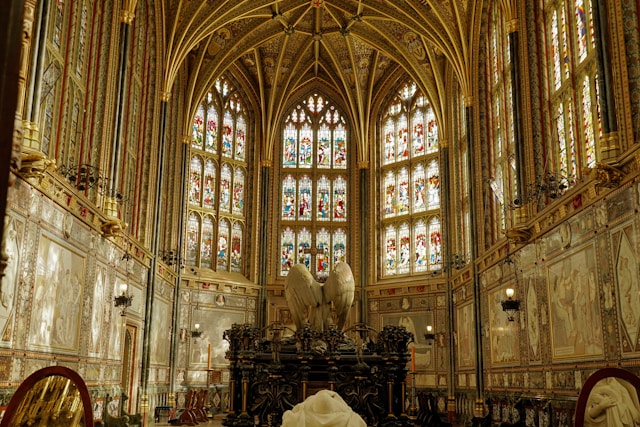
Discover the Heart of Faith at Holy Trinity Parish: A Comprehensive Guide
Welcome to the sacred grounds of Holy Trinity Parish, a beacon of spiritual growth and community. Immerse yourself in the rich history, vibrant ministries, and profound teachings that have shaped this esteemed parish for generations.
A Rich Tapestry of History
Holy Trinity Parish traces its roots back to the humble beginnings of a small Catholic community in the late 19th century. Over the decades, the parish has witnessed countless milestones, including:
- Establishment of the first church building in 1895
- Construction of a larger church in 1925
- Opening of a new parish school in 1960
- Expansion of the church and construction of a parish center in 1990
Vibrant Ministries for All
Holy Trinity Parish offers a diverse array of ministries to cater to the spiritual, social, and educational needs of its parishioners. These ministries include:
- Youth Ministry: A dynamic program for young people, fostering their faith and involvement in the Church
- Adult Education: Classes and workshops that delve into Catholic teachings, Scripture, and current religious issues
- Social Justice Ministry: A compassionate outreach to the needy, providing assistance to the less fortunate
- Liturgical Ministries: Opportunities to serve as altar servers, lectors, ushers, and communion ministers
Profound Teachings and Spiritual Guidance
At the heart of Holy Trinity Parish lies a commitment to fostering a deep understanding of Catholic beliefs and practices. Through weekly Masses, homilies, and parish events, parishioners are led by a dedicated team of priests and staff who:
- Provide inspiring and thought-provoking homilies
- Offer guidance and support through the sacraments of Reconciliation and Anointing of the Sick
- Facilitate prayer groups and Bible studies that nurture spiritual growth
Community at the Core
Holy Trinity Parish is not merely a place of worship; it is a vibrant community where members connect with each other and find a sense of belonging. The parish fosters a welcoming atmosphere through:
- Parish Socials: Regular events that provide opportunities for fellowship and community building
- Volunteer Programs: Meaningful ways to contribute to the parish and make a difference in the lives of others
- Prayer Groups: Intimate gatherings where parishioners share their faith and support each other
Practical Information
To find out more about Holy Trinity Parish or to get involved, visit the parish website at https://www.holytrinity.org or contact the parish office at (555) 123-4567. The parish is located at 123 Main Street, Anytown, CA 12345.
Benefits of Membership
- Access to a wide range of spiritual, social, and educational programs
- The opportunity to connect with and build relationships with a supportive community
- The chance to make a meaningful contribution to the parish and the wider world
- A deeper understanding and appreciation of Catholic beliefs and traditions
Conclusion
Holy Trinity Parish is a vibrant and welcoming community where faith and fellowship thrive. With its rich history, dedicated clergy, and passionate parishioners, this parish offers a sanctuary for spiritual growth, connection, and service. Whether you are seeking a deeper understanding of your faith, a sense of belonging, or simply a place to connect with others, Holy Trinity Parish is the perfect place for you to call home.

Embark on a Spiritual Odyssey: Unveiling the Enigmatic Holy Trinity Greek Orthodox Church
A Tapestry of Tradition and Ritual
The Holy Trinity Greek Orthodox Church is an ancient and hallowed institution, its roots deeply embedded in the cradle of Christianity. As a beacon of Eastern Orthodox tradition, it has fostered a distinct and profound spiritual experience for centuries.
Theology: The Cornerstone of Belief
Underpinning the Holy Trinity’s teachings is a profound belief in the Holy Trinity. This concept posits the existence of God as three divine persons: the Father, the Son (Jesus Christ), and the Holy Spirit. Each person is distinct yet inseparable, united in an eternal dance of love and communion.
Liturgy: A Symphony of Worship
The Holy Trinity’s liturgy is an awe-inspiring spectacle, a vibrant fusion of prayer, music, and ritual. The Divine Liturgy, the central act of worship, is an immersive experience that transports the faithful into the realm of the divine.
The Divine Liturgy: A Journey of Grace
At the heart of the liturgy lies the Divine Liturgy. It commences with the Prothesis, a symbolic offering of bread and wine that represents the offering of Christ’s body and blood. The Liturgy of the Faithful follows, where the faithful receive Holy Communion, partaking in the very essence of Christ’s presence.
Other Sacraments: Channels of Grace
In addition to the Divine Liturgy, the Holy Trinity recognizes six other sacraments: Baptism, Confirmation, Confession, Marriage, Holy Unction, and Holy Orders. Each sacrament provides a unique channel of grace, strengthening the connection between the believer and God.
Architecture: A Sacred Haven
Holy Trinity churches are architectural marvels that embody the sacred nature of their purpose. Their distinctive features reflect the rich history and symbolism of the Eastern Orthodox tradition.
Byzantine Influence: A Legacy of Grandeur
Holy Trinity churches often showcase a fusion of Byzantine and Middle Eastern architectural influences. The iconic dome, a symbol of heaven, dominates the skyline. Intricate mosaics and frescoes adorn the walls, depicting biblical scenes and inspiring the faithful.
Iconography: A Window to the Divine
Icons hold a significant place in Holy Trinity churches. These sacred paintings depict Christ, saints, and angels, providing a tangible connection to the divine realm. They serve as a focus for prayer and contemplation, bridging the gap between the earthly and the heavenly.
Community: A Spiritual Embrace
The Holy Trinity’s community is a vibrant tapestry woven together by a shared faith. It offers a sense of belonging, support, and spiritual guidance.
Philanthropy: A Reflection of Compassion
Holy Trinity churches are renowned for their commitment to philanthropy. They actively engage in outreach programs, providing assistance to the needy and fostering a spirit of compassion within the community.
Education: Nurturing the Faith
Education plays a vital role in the Holy Trinity. Sunday schools and religious education programs instill the teachings and values of the faith in the younger generations, ensuring the continuity of the Orthodox tradition.
Conclusion
The Holy Trinity Greek Orthodox Church stands as a testament to the enduring power of faith. Through its profound theology, immersive liturgy, awe-inspiring architecture, and vibrant community, it has shaped the spiritual landscape for centuries. As a beacon of tradition and spiritual enlightenment, the Holy Trinity continues to guide and inspire seekers on their journey towards divine communion.
Appendix
References:
* Greek Orthodox Archdiocese of America
* Orthodox Church in America
* Encyclopædia Britannica: Eastern Orthodox ChurchAdditional Resources:
* Holy Trinity Greek Orthodox Church (New York City)
* Greek Orthodox Archdiocese of America: Liturgy
* Orthodox Church in America: Holy Trinity Icon in New York City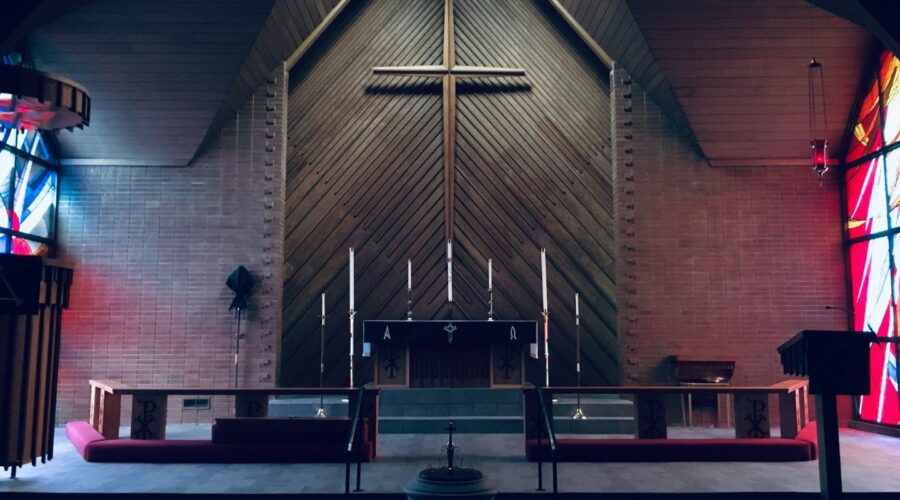
Discover the Holy Trinity Cathedral: An Architectural and Spiritual Masterpiece
Nestled amidst the vibrant cityscape, the Holy Trinity Cathedral stands as a testament to the enduring power of faith and the human spirit. This magnificent architectural marvel invites visitors on a journey of spiritual discovery and historical wonder.
Unveiling the Architectural Splendor
The Holy Trinity Cathedral is a masterpiece of Gothic Revival architecture, its soaring spires and intricate ornamentation capturing the essence of the Middle Ages. Constructed in the late 19th century, the cathedral’s grand design was inspired by the great European cathedrals of the time.
Iconic Facade
Adorned with intricate carvings and a rose window of captivating beauty, the cathedral’s facade presents a stunning first impression. The central portal, flanked by graceful columns, welcomes visitors into a realm of awe and inspiration.
Majestic Nave
Step inside the awe-inspiring nave, where towering columns and pointed arches create a sense of boundless space. The vaulted ceiling, adorned with vibrant frescoes and stained glass windows, paints a breathtaking canvas of biblical scenes.
Soaring Transepts
Leading off the nave, the transepts extend like outstretched arms, offering additional space for worship and reflection. The north transept features a stunning rose window, while the south transept houses an elaborate altar dedicated to the Virgin Mary.
Exploring the Spiritual Journey
Beyond its architectural grandeur, the Holy Trinity Cathedral is a living embodiment of Christian faith. It serves as a hub for worship, spiritual growth, and community outreach.
Central Altar
The heart of the cathedral is the central altar, where the Eucharist is celebrated. Intricately carved with biblical scenes, the altar symbolizes the unity of the faithful in Christ’s presence.
Sacramental Chapels
Nestled around the central altar are a series of sacramental chapels dedicated to various saints. Each chapel provides a space for intimate prayer and reflection, offering solace and spiritual sustenance.
Choir and Sanctuary
The cathedral choir plays a vital role in worship, their voices filling the space with heavenly harmonies. The sanctuary, behind the choir, is reserved for the clergy and is the focal point of religious ceremonies.
Historical Tidbits
The Holy Trinity Cathedral has witnessed countless moments in history, serving as a place of refuge, celebration, and remembrance.
Construction and Consecration
The cathedral’s construction began in 1888 and took over 20 years to complete. It was consecrated in 1910, becoming a symbol of the growing Catholic population in the city.
Historic Events
Over the years, the cathedral has hosted numerous significant events, including the installation of several bishops and the celebration of major religious festivals. It has also been a venue for important civic functions.
Restoration and Preservation
To preserve its architectural and historical legacy, the cathedral underwent extensive restoration work in the late 20th century. The meticulous restoration efforts have ensured that the Holy Trinity Cathedral continues to inspire generations of visitors.
Visitor Information
The Holy Trinity Cathedral is open daily to the public. Visitors are welcome to attend services, explore the cathedral’s interior, and marvel at its architectural beauty.
Guided Tours
Guided tours are available for groups, providing an in-depth look at the cathedral’s history, architecture, and spiritual significance. Tours can be arranged in advance.
Pilgrimages and Retreats
The cathedral hosts regular pilgrimages and retreats, offering opportunities for spiritual growth and reflection. These events are open to individuals and groups seeking a deeper connection with their faith.
Additional Resources
To learn more about the Holy Trinity Cathedral and its ongoing mission, please visit the following resources:
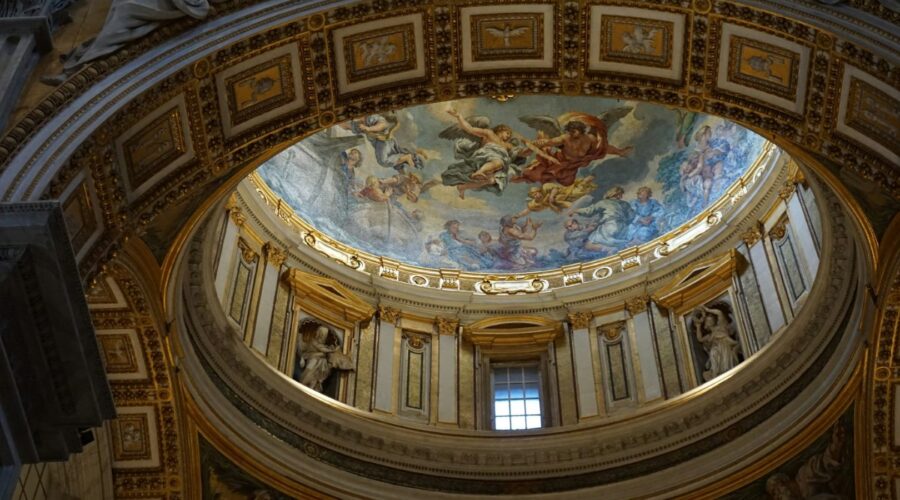
The Holy Name of Mary: A Guide to Its Significance and Meaning
The Holy Name of Mary, the mother of Jesus Christ, holds a profound significance in Christian tradition. This blog post delves into the multifaceted nature of Mary’s name, exploring its scriptural origins, theological interpretations, and cultural impact.
Biblical Foundations
The name “Mary” first appears in the New Testament Gospels. In the Gospel of Luke, the angel Gabriel announces Mary’s impending birth to her cousin Elizabeth: “And behold, thou shalt conceive in thy womb, and bring forth a son, and shalt call his name Jesus” (Luke 1:31).
While the name “Jesus” is specifically instructed by the angel, the name “Mary” is not directly specified in this passage. However, it is believed to be the Hebrew name “Miryam” or “Miriam,” which means “bitterness” or “sorrow.”
Possible Origins of the Name “Mary”
- From the Hebrew root “mar,” meaning “bitter.”
- From the Egyptian name “Mryt,” meaning “beloved of Amun.”
- From the Persian name “Maria,” meaning “sea star.”
Theological Interpretations
Throughout Christian history, the Holy Name of Mary has been the subject of extensive theological reflection and interpretation. Different traditions offer varying perspectives on its significance:
Catholic Tradition
- **Mary as the New Eve:** Mary is seen as the “New Eve,” reversing the role of the Old Testament Eve by bringing salvation through her obedience.
- **The Mediatrix of Graces:** Catholics believe that Mary intercedes for believers before God, conveying their prayers and petitions.
Eastern Orthodox Tradition
- **The Theotokos:** Mary is venerated as the “Mother of God” (Theotokos), emphasizing her unique role in giving birth to the Son of God.
- **The Panagia:** Mary is referred to as the “All-Holy One” (Panagia), acknowledging her purity and sinlessness.
Protestant Tradition
- **The Importance of Faith:** Protestants focus on the significance of Mary’s faith in God and her obedience to his will.
- **The Example of Humility:** Mary is seen as an example of humility, submission, and submission to God’s plan.
Cultural Impact
Beyond its theological significance, the Holy Name of Mary has had a profound impact on global culture and society:
Literature and Art
Mary has been a central figure in countless works of literature, poetry, and art throughout history, inspiring masterpieces such as Dante’s “Divine Comedy” and Raphael’s “Madonna of the Sistine.”
Place Names
Many cities, towns, and landmarks around the world bear the name of Mary, including the cities of Maryville, Tennessee, and Mariazell, Austria.
Devotional Practices
Christian denominations around the world engage in various devotional practices centered on the Holy Name of Mary, such as the Rosary and the Angelus prayer.
Tips for Using the Name “Mary”
When using the name “Mary” in conversation or writing, consider the following tips:
- **Be respectful:** Use the name “Mary” with reverence and respect.
- **Use the appropriate title:** Catholic tradition uses the titles “Blessed Virgin Mary” or “Mother of God,” while Protestants typically use “Mary, the mother of Jesus.”
- **Avoid slang or colloquialisms:** Refrain from using nicknames or informal terms, such as “Mary Poppins” or “Ma.”
Conclusion
The Holy Name of Mary carries a rich tapestry of meaning that encompasses biblical foundations, theological interpretations, cultural impact, and devotional practices. Understanding the significance of Mary’s name provides a deeper appreciation for the role she plays in Christian history and spirituality.
Whether you are a devout believer, a casual observer, or simply curious about the subject, may this blog post serve as an informative guide to the Holy Name of Mary.
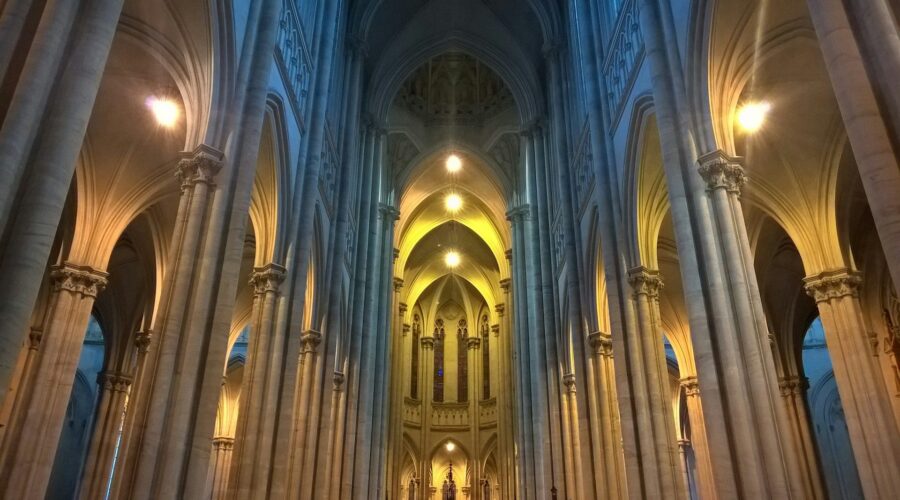
Discover the Majestic Holy Name of Jesus Cathedral: A Beacon of Faith and Architectural Splendor
Introduction
The Holy Name of Jesus Cathedral, a towering testament to faith and architectural brilliance, is a captivating landmark in the heart of Chicago. This hallowed sanctuary is renowned for its stunning Gothic Revival design, inspiring artwork, and rich history that unfolds a mesmerizing tale of devotion, resilience, and artistic triumph.
A Tapestry of History
The story of the Holy Name of Jesus Cathedral begins in the mid-19th century, when a small group of German immigrants established a parish in Chicago. As their congregation grew, they embarked on a grand endeavor to build a magnificent edifice that would reflect their unwavering faith and serve as a spiritual beacon for the city.
In 1874, the cornerstone of the cathedral was laid, and over the next three decades, skilled artisans meticulously constructed the colossal structure. The cathedral opened its doors in 1910, marking a momentous milestone in Chicago’s architectural and religious landscape.
Architectural Masterpiece
The Holy Name of Jesus Cathedral is a stunning example of Gothic Revival architecture, characterized by its soaring spires, intricate stonework, and elegant stained-glass windows. The cathedral’s facade is adorned with intricate carvings, depicting scenes from the life of Christ and the saints.
Inside, the cathedral’s grand nave is supported by massive pillars, creating a sense of awe and reverence. The vaulted ceilings are adorned with vibrant frescoes, immersing visitors in a celestial realm of divine beauty.
Awe-Inspiring Stained Glass
One of the most striking features of the Holy Name of Jesus Cathedral is its collection of magnificent stained-glass windows. Created by renowned artisans, these windows depict biblical scenes and figures, casting a kaleidoscopic play of colors across the cathedral’s interior.
Of particular note is the “Creation” window, a breathtaking masterpiece that spans three stories and depicts the biblical account of creation. The window’s vibrant hues and intricate details bring the story to life, creating a truly awe-inspiring spectacle.
Majestic Organ and Inspiring Artwork
The cathedral boasts a magnificent organ, one of the largest in the Midwest. The organ’s powerful sound reverberates through the cathedral, creating a glorious symphony that accompanies the solemn liturgies and joyous celebrations held within.
In addition to its stunning architecture and stained glass, the cathedral is also home to a collection of inspiring artwork. Paintings, sculptures, and mosaics grace the walls and alcoves, offering a testament to the artistry and devotion of the cathedral’s patrons.
A Sanctuary for Worship and Community
The Holy Name of Jesus Cathedral is not merely an architectural marvel but a thriving center of worship and community. Daily Masses, special liturgies, and religious services provide opportunities for spiritual nourishment and growth.
The cathedral also plays an active role in the wider community, offering charitable programs, hosting educational events, and providing support to those in need. It is a place where faith, hope, and love converge, creating a beacon of light in the bustling metropolis of Chicago.
Visitor Information
The Holy Name of Jesus Cathedral is open to visitors daily for self-guided tours. Guided tours are also available by appointment.
Address: 735 N State St, Chicago, IL 60610
Website: https://holynameofjesuscathedral.org/
Phone: (312) 337-5820
Email: [email protected]Conclusion
The Holy Name of Jesus Cathedral is a magnificent testament to the power of faith, the beauty of art, and the resilience of the human spirit. Its towering spires, awe-inspiring stained glass, and inspiring artwork create a sanctuary that transcends mere architecture, becoming a sacred space where the divine and the human connect in profound ways. As a beacon of hope and a symbol of the enduring power of spirituality, the Holy Name of Jesus Cathedral continues to captivate and inspire countless souls in Chicago and beyond.
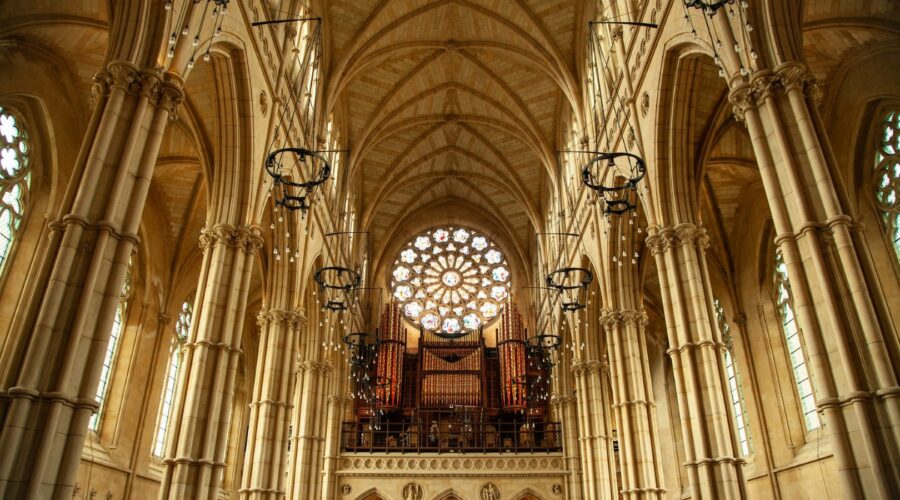
The Power of the Holy Name: A Comprehensive Guide
Introduction
The holy name is a sacred and powerful symbol that has been revered by countless individuals throughout history. It is a name that is believed to possess spiritual power and significance, and it is often used in prayer, meditation, and other religious practices. In this blog post, we will explore the holy name, its history, and its significance. We will also provide tips on how to use the holy name in your own spiritual practice.
The History of the Holy Name
The holy name has been used in various cultures and religions for centuries. In ancient Egypt, the pharaohs were considered to be divine, and their names were often considered to be holy. In Judaism, the name of God is considered to be sacred, and it is forbidden to speak it aloud. In Christianity, the name of Jesus is considered to be holy, and it is often used in prayer and worship.
The Significance of the Holy Name
The holy name is believed to possess spiritual power and significance. It is said that the name of God can be used to invoke his presence, and that the name of Jesus can be used to heal and protect. The holy name is also said to be a source of peace and comfort.
Using the Holy Name in Your Spiritual Practice
There are many ways to use the holy name in your own spiritual practice. You can pray to it, meditate on it, or simply repeat it to yourself. You can also use the holy name to bless yourself, your loved ones, or your home.
Here are some tips for using the holy name in your spiritual practice:
* Pray to the holy name. When you pray to the holy name, you are connecting with the divine. You can ask for guidance, protection, or healing. You can also simply express your gratitude and love.
* Meditate on the holy name. When you meditate on the holy name, you are allowing its power and significance to enter your heart and mind. You can focus on the sound of the name, the meaning of the name, or the feeling that the name evokes in you.
* Repeat the holy name to yourself. Repeating the holy name to yourself is a simple but powerful way to connect with the divine. You can repeat the name aloud or silently. You can also repeat the name while you are walking, driving, or doing other activities.Conclusion
The holy name is a sacred and powerful symbol that can be used to connect with the divine. It is a name that is full of power and significance, and it can be used to bring peace, comfort, and healing into your life. If you are looking for a way to deepen your spiritual practice, I encourage you to start using the holy name today.